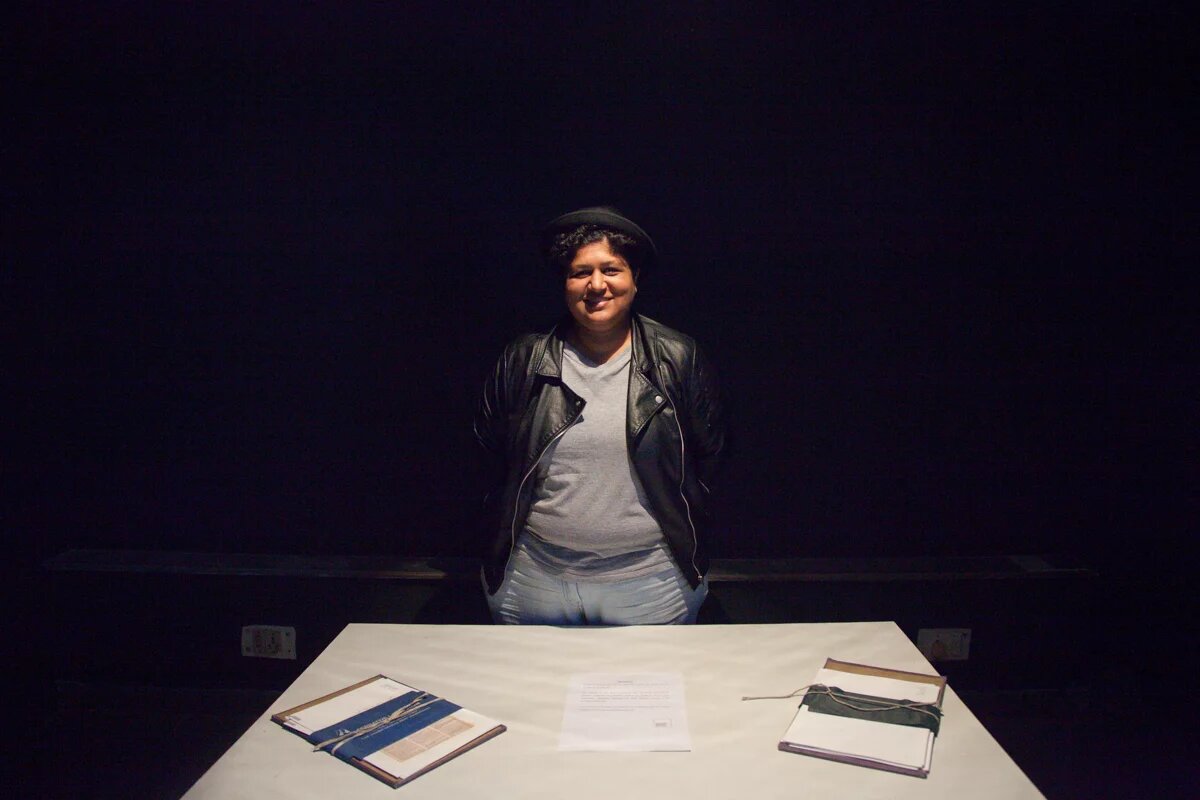The Closet is a space that is both safe, a site of trauma as well as a construct which ‘needs’ to be broken out of. Placing the Closet in a gallery is an attempt to create a pocket of space that allows outsiders entry into its cruel existence.

From our special on "Queering Memory".
My engagement with QAMRA (Queer Archive for Memory, Reflection and Activism) in Bangalore had two main reasons. The first is the urgency to showcase material about the LGBTQ+ community that is not just media coverage. The second was a need to use archival material in a queer way, in this specific context, making people enter the Closet.
Media representation is a direct clue as to how the community is viewed. It shows that these people commit suicide and are roughed up by the Police and also have a tough time with the State. It also shows that those with access to Media may be able to fight for rights.
The way in which archival material is thought of and displayed usually takes a very traditional form. Where there is text and images set up as readable reproductions in an environment conducive to a ‘relaxed’ library or reading room setting. But the installation ‘So you think you know the closet?’ pushed the ways in which archival material can be used. What an archive also does is to locate the meaning of memory and history of a particular identity.
Queer archives are necessarily documenting oral histories, images and recorded history of the LGBTQ+ community.
This installation aimed to bring people in, to engage with a certain kind of discomfort. The material on display was also sourced from careful study of available material. From going through testimonies of lesbians and transgender people that attested police harassment.
The installation was a rather simple one. A table, resembling one in an interrogation room, upon which were set two volumes. These volumes contain images and snippets from newspapers that document the ways in which queer lives and deaths were reported. It also reported abuse and violence caused on the bodies of transgender persons. It reported suicides, that are later read as honour killings. All this on one table, with a single chair. One lamp dangles above the table, shedding light only on the table. Only one person can come in at a time. Behind the table, on a wall is a running text that again shows excerpts of torture by police and statements from the fight to decriminalise article 377 from the Indian Penal Code.
The material on display, placed in legal binders on the table, contained both reproduced newspaper clippings and text from various documents and recordings. A lot of this material was triggering and therefore the curatorial note was also prefaced with a trigger warning. Coming from a personal experience of being triggered by stories of suicide and harassment, the research part of this project was very difficult. And the ultimate aim was to show people that there is a lot more work that needs to be done, if just this snippet of material can be so thought provoking.
What I did with archival material was to invite people, in an art gallery to experience the Closet.
The Closet is a space that is both safe, a site of trauma as well as a construct which ‘needs’ to be broken out of. Many times it is a kaleidoscope of all of these things. For a queer person, the closet is also familiar. The need to ‘come out’ is also familiar and often a matter of privilege.
As art galleries and museums do, it rids the object - hear the closet - of its political and cultural meaning. But, also, heightens the notion of being closeted? I am problematizing both the idea of the closet as well as the placement of archival material in the gallery, inside that closet. By using archival material, one draws attention to various facts, but the experience of being in the closet is heightened. Also, focusing on just the contents of the table,
immersing in the darkness while being reminded that the State has an eye on your bedroom are all elements that make this closet real. The closet is a cruel space. It has become natural for queer people to inhabit this space that does not allow them any freedom of expression. By placing the closet in the gallery, I am attempting to create a pocket of space that allows entry into the cruel world of a closet.
Artistic interpretations of archival material bring a new kind of viewership. The audience is not just reading material or being ‘educated’ about the LGBTQ+ community. They are being invited to the world that queer people inhabit. The installation that I created also is a spin on the idea of the closet.
From our special on "Queering Memory".



